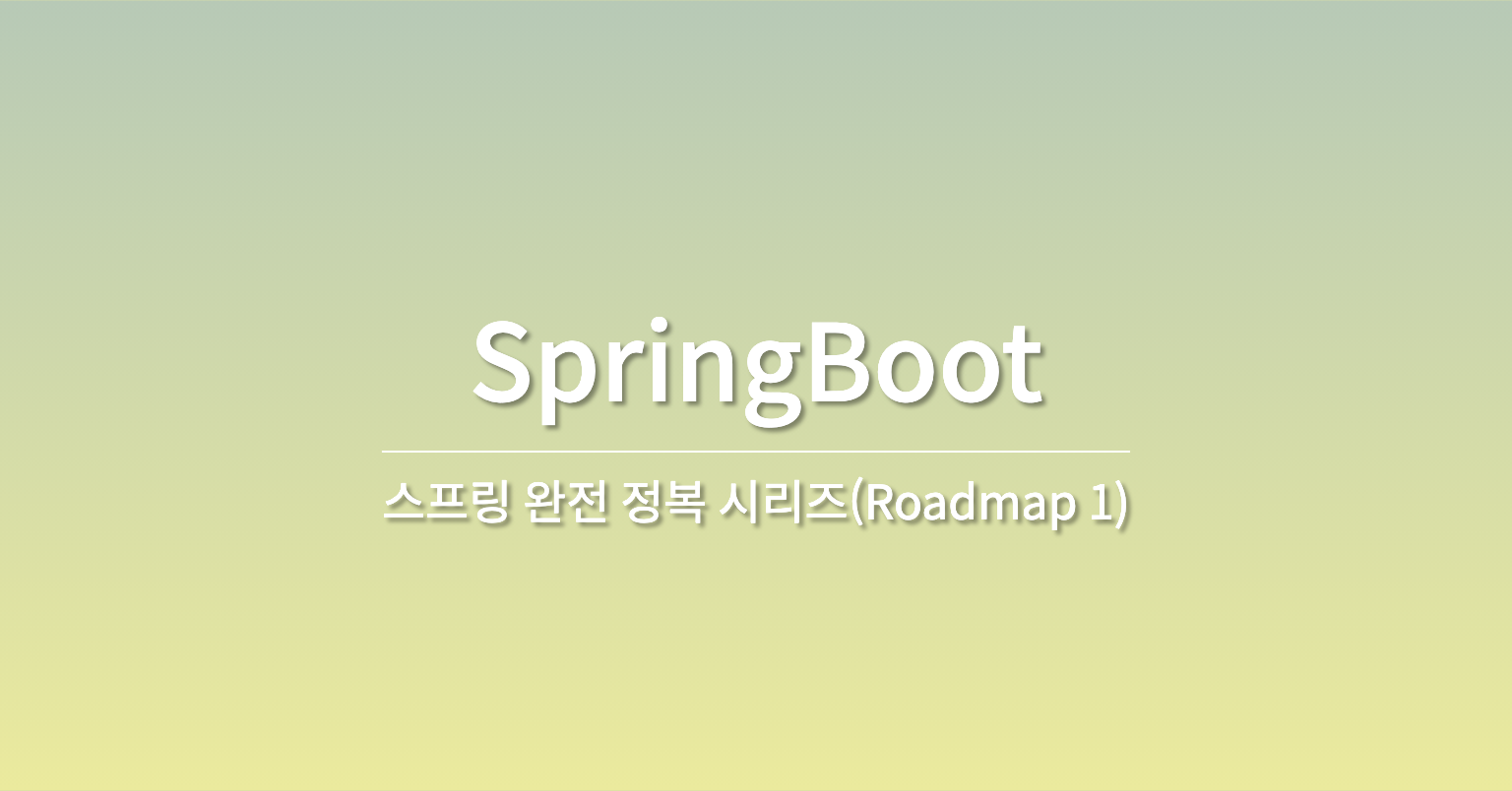
🏷 프로젝트 생성
스프링 부트 스타터 사이트로 이동해서 프로젝트 생성
✔️ 프로젝트 선택
- Project: Gradle
- Project Language: Java
- Spring Boot: 2.5.x
✔️ Project Metadata
- Group: hello
- Artifact: thymeleaf-basic
- Name: thymeleaf-basic
- Package name: hello.thymeleaf
- Packaging: Jar
- Java: 11
✔️ Dependencies
- Spring Web
- Lombok
- Thymeleaf
🏷 타임리프 소개
✔️ 타임리프 특징
1️⃣ 서버 사이드 HTML 렌더링 (SSR)
2️⃣ 네츄럴 템플릿
3️⃣ 스프링 통합 지원
1️⃣ 서버 사이드 HTML 렌더링 (SSR)
- 타임리프는 백엔드 서버에서 HTML을 동적으로 렌더링 하는 용도로 사용된다.
2️⃣ 네츄럴 템플릿
- 타임리프는 순수 HTML을 최대한 유지하는 특징이 있다.
- 타임리프로 작성된 파일은 해당 파일을 그대로 웹 브라우저에서 열어도 정상적인 HTML 결과를 확인할 수 있다.
물론 이 경우 동적으로 결과가 렌더링 되지는 않는다. - 하지만 HTML 마크업 결과가 어떻게 되는지 파일만 열어도 바로 확인할 수 있다.
- 이렇게 순수 HTML을 그대로 유지하면서 뷰 템플릿도 사용할 수 있는 타임리프의 특징을 네츄럴 템플릿 (natural templates)이라 한다.
3️⃣ 스프링 통합 지원
- 타임리프는 스프링과 자연스럽게 통합되고, 스프링의 다양한 기능을 편리하게 사용할 수 있게 지원한다.
✔️ 타임리프 사용 선언
타임리프를 사용하려면 다음 선언을 하면 된다!
`<html xmlns:th="http://www.thymeleaf.org">`🏷 텍스트 - text, utext
타임리프의 가장 기본 기능인 텍스트를 출력하는 기능 먼저 알아보자😊
HTML의 콘텐츠(content)에 데이터를 출력할 때는 th:text 를 사용하면 된다.
➡️ <span th:text="${data}">
@Controller
@RequestMapping("/basic")
public class BasicController {
@GetMapping("/text-basic")
public String textBasic(Model model) {
model.addAttribute("data", "Hello Spring!");
return "basic/text-basic";
}
}<!DOCTYPE html>
<html xmlns:th="http://www.thymeleaf.org">
<head>
<meta charset="UTF-8">
<title>Title</title>
</head>
<body>
<h1>컨텐츠에 데이터 출력하기</h1>
<ul>
<li>th:text 사용 <span th:text="${data}"></span></li>
<li>컨텐츠 안에서 직접 출력하기 = [[${data}]]</li>
</ul>
</body>
</html>✔️ Escape
@GetMapping("/text-unescaped")
public String textUnescaped(Model model) {
model.addAttribute("data", "Hello <b>Spring!</b>");
return "basic/text-unescaped";
}<!DOCTYPE html>
<html xmlns:th="http://www.thymeleaf.org">
<head>
<meta charset="UTF-8">
<title>Title</title>
</head>
<body>
<h1>text vs utext</h1>
<ul>
<li>th:text = <span th:text="${data}"></span></li>
<li>th:utext = <span th:utext="${data}"></span></li>
</ul>
<h1><span th:inline="none">[[...]] vs [(...)]</span></h1>
<ul>
<li><span th:inline="none">[[...]] = </span>[[${data}]]</li>
<li><span th:inline="none">[(...)] = </span>[(${data})]</li>
</ul>
</body>
</html>
HTML문서는 <,> 같은 특수문자를 기반으로 정의된다.
따라서 뷰 템플릿으로 HTML 화면을 생성할 때는 출력하는 데이터에 이러한 특수 문자가 있는 것을 주의해서 사용해야 한다!!
웹 브라우저는 < 를 HTML 태그의 시작으로 인식한다.
따라서 <를 태그의 시작이 아니라 문자로 표현할 수 있는 방법이 필요한데, 이것을 HTML 엔티티라 한다❗️
그리고 이렇게 HTML에서 사용하는 특수 문자를 HTML 엔티티로 변경하는 것을 이스케이프(escape) 라 한다.
그리고 타임리프가 제공하는 th:text , [[...]] 는 기본적으로 이스케이스(escape)를 제공한다.
<➡️<>➡️>
✔️ Unescape
이스케이프 기능을 사용하지 않으려면 어떻게 해야할까🤔❓
타임리프는 다음 두 기능을 제공한다❗️
th:text➡️th:utext[[...]]➡️[(...)]
🏷 변수 - SpringEL
타임리프에서 변수를 사용할 때는 변수 표현식을 사용한다.
➡️ ${...}
@GetMapping("/variable")
public String variable(Model model) {
User userA = new User("userA", 10);
User userB = new User("userB", 20);
List<User> list = new ArrayList<>();
list.add(userA);
list.add(userB);
Map<String, User> map = new HashMap<>();
map.put("userA", userA);
map.put("userB", userB);
model.addAttribute("user", userA);
model.addAttribute("users", list);
model.addAttribute("userMap", map);
return "basic/variable";
}<!DOCTYPE html>
<html xmlns:th="http://www.thymeleaf.org">
<head>
<meta charset="UTF-8">
<title>Title</title>
</head>
<body>
<h1>SpringEL 표현식</h1>
<ul>Object
<li>${user.username} = <span th:text="${user.username}"></span></li>
<li>${user['username']} = <span th:text="${user['username']}"></span></li>
<li>${user.getUsername()} = <span th:text="${user.getUsername()}"></span></li>
</ul>
<ul>List
<li>${users[0].username} = <span th:text="${users[0].username}"></span></li>
<li>${users[0]['username']} = <span th:text="${users[0]['username']}"></span></li>
<li>${users[0].getUsername()} = <span th:text="${users[0].getUsername()}"></span></li>
</ul>
<ul>Map
<li>${userMap['userA'].username} = <span th:text="${userMap['userA'].username}"></span></li>
<li>${userMap['userA']['username']} = <span th:text="${userMap['userA']['username']}"></span></li>
<li>${userMap['userA'].getUsername()} = <span th:text="${userMap['userA'].getUsername()}"></span></li>
</ul>
<h1>지역 변수 - (th:with)</h1>
<div th:with="first=${users[0]}">
<p>처음 사람의 이름은 <span th:text="${first.username}"></span></p>
</div>
</body>
</html>
✔️ SpringEL 다양한 표현식 사용
Object
user.username: user의 username을 프로퍼티 접근 ➡️user['username']user['username']: 위와 같음 ➡️user.getUsername()user.getUsername(): user의getUsername()을 직접 호출
List
users[0].username: List에서 첫 번째 회원을 찾고 username 프로퍼티 접근 ➡️list.get(0).getUsername()users[0]['username']: 위와 같음users[0].getUsername(): List에서 첫 번째 회원을 찾고 메서드 직접 호출
Map
userMap['userA'].username: Map에서 userA를 찾고, username 프로퍼티 접근 ➡️map.get("userA").getUsername()userMap['userA']['username']: 위와 같음userMap['userA'].getUsername(): Map에서 userA를 찾고 메서드 직접 호출
📌 지역 변수 선언
th:with를 사용하면 지역 변수를 선언해서 사용할 수 있다.
지역 변수는 선언한 테그 안에서만 사용할 수 있다.
🏷 기본 객체들
타임리프는 기본 객체들을 제공한다❗️
${#request}${#response}${#session}${#servletContext}${#locale}
그런데 #request 는 HttpServletRequest 객체가 그대로 제공되기 때문에 데이터를 조회하려면 request.getParameter("data") 처럼 불편하게 접근해야 한다😐
이런 점을 해결하기 위해 편의 객체도 제공한다👍🏻
- HTTP 요청 파라미터 접근 :
param${param.paramData}
- HTTP 세션 접근 :
session${session.sessionData}
- 스프링 빈 접근 :
@${@helloBean.hello('Spring!')}
@GetMapping("/basic-objects")
public String basicObjects(HttpSession session) {
session.setAttribute("sessionData", "Hello Session");
return "basic/basic-objects";
}
@Component("helloBean")
static class HelloBean {
public String hello(String data) {
return "Hello " + data;
}
}<!DOCTYPE html>
<html xmlns:th="http://www.thymeleaf.org">
<head>
<meta charset="UTF-8">
<title>Title</title>
</head>
<body>
<h1>식 기본 객체 (Expression Basic Objects)</h1>
<ul>
<li>request = <span th:text="${#request}"></span></li>
<li>response = <span th:text="${#response}"></span></li>
<li>session = <span th:text="${#session}"></span></li>
<li>servletContext = <span th:text="${#servletContext}"></span></li>
<li>locale = <span th:text="${#locale}"></span></li>
</ul>
<h1>편의 객체</h1>
<ul>
<li>Request Parameter = <span th:text="${param.paramData}"></span></li>
<li>session = <span th:text="${session.sessionData}"></span></li>
<li>spring bean = <span th:text="${@helloBean.hello('Spring!')}"></span></li>
</ul>
</body>
</html>
🏷 유틸리티 객체와 날짜
타임리프는 문자, 숫자, 날짜, URI등을 편리하게 다루는 다양한 유틸리티 객체들을 제공한다!
<!DOCTYPE html>
<html xmlns:th="http://www.thymeleaf.org">
<head>
<meta charset="UTF-8">
<title>Title</title>
</head>
<body>
<h1>LocalDateTime</h1>
<ul>
<li>default = <span th:text="${localDateTime}"></span></li>
<li>yyyy-MM-dd HH:mm:ss = <span th:text="${#temporals.format(localDateTime, 'yyyy-MM-dd HH:mm:ss')}"></span></li>
</ul>
<h1>LocalDateTime - Utils</h1>
<ul>
<li>${#temporals.day(localDateTime)} = <span th:text="${#temporals.day(localDateTime)}"></span></li>
<li>${#temporals.month(localDateTime)} = <span th:text="${#temporals.month(localDateTime)}"></span></li>
<li>${#temporals.monthName(localDateTime)} = <span th:text="${#temporals.monthName(localDateTime)}"></span></li>
<li>${#temporals.monthNameShort(localDateTime)} = <span th:text="${#temporals.monthNameShort(localDateTime)}"></span></li>
<li>${#temporals.year(localDateTime)} = <span th:text="${#temporals.year(localDateTime)}"></span></li>
<li>${#temporals.dayOfWeek(localDateTime)} = <span th:text="${#temporals.dayOfWeek(localDateTime)}"></span></li>
<li>${#temporals.dayOfWeekName(localDateTime)} = <span th:text="${#temporals.dayOfWeekName(localDateTime)}"></span></li>
<li>${#temporals.dayOfWeekNameShort(localDateTime)} = <span th:text="${#temporals.dayOfWeekNameShort(localDateTime)}"></span></li>
<li>${#temporals.hour(localDateTime)} = <span th:text="${#temporals.hour(localDateTime)}"></span></li>
<li>${#temporals.minute(localDateTime)} = <span th:text="${#temporals.minute(localDateTime)}"></span></li>
<li>${#temporals.second(localDateTime)} = <span th:text="${#temporals.second(localDateTime)}"></span></li>
<li>${#temporals.nanosecond(localDateTime)} = <span th:text="${#temporals.nanosecond(localDateTime)}"></span></li>
</ul>
</body>
</html>✔️ 타임리프 유틸리티 객체들
#message: 메시지, 국제화 처리#uris: URI 이스케이프 지원#dates: java.util.Date 서식 지원 #calendars : java.util.Calendar 서식 지원#temporals: 자바8 날짜 서식 지원#numbers: 숫자 서식 지원#strings: 문자 관련 편의 기능#objects: 객체 관련 기능 제공#bools: boolean 관련 기능 제공#arrays: 배열 관련 기능 제공#lists,#sets,#maps: 컬렉션 관련 기능 제공#ids: 아이디 처리 관련 기능 제공, 뒤에서 설명
타임리프에서 자바8 날짜인
LocalDate,LocalDateTime,Instant를 사용하려면 추가 라이브러리가 필요하다.
스프링 부트 타임리프를 사용하면 해당 라이브러리가 자동으로 추가되고 통합된다👍🏻
➡️ 타임리프 자바 8 날짜 지원 라이브러리 :thymeleaf-extras-java8time
🏷 URL 링크
타임리프에서 URL을 생성할 때는 @{...} 문법을 사용하면 된다!
@GetMapping("/link")
public String link(Model model) {
model.addAttribute("param1", "data1");
model.addAttribute("param2", "data2");
return "basic/link";
}<!DOCTYPE html>
<html xmlns:th="http://www.thymeleaf.org">
<head>
<meta charset="UTF-8">
<title>Title</title>
</head>
<body>
<h1>URL 링크</h1>
<ul>
<li><a th:href="@{/hello}">basic url</a></li>
<li><a th:href="@{/hello(param1=${param1}, param2=${param2})}">hello query param</a></li>
<li><a th:href="@{/hello/{param1}/{param2}(param1=${param1}, param2=${param2})}">path variable</a></li>
<li><a th:href="@{/hello/{param1}(param1=${param1}, param2=${param2})}">path variable + query parameter</a></li>
</ul>
</body>
</html>
✔️ 단순한 URL
@{/hello}➡️/hello
✔️ 쿼리 파라미터
@{/hello(param1=${param1}, param2=${param2})}/hello?param1=data1¶m2=data2- () 에 있는 부분은 쿼리 파라미터로 처리된다.
✔️ 경로 변수
@{/hello/{param1}/{param2}(param1=${param1}, param2=${param2})}/hello/data1/data2- URL 경로상에 변수가 있으면 () 부분은 경로 변수로 처리된다.
✔️ 경로 변수 + 쿼리 파라미터
@{/hello/{param1}(param1=${param1}, param2=${param2})}/hello/data1?param2=data2- 경로 변수와 쿼리 파라미터를 함께 사용할 수 있다.
🏷 리터럴
리터럴은 소스 코드상에 고정된 값을 말하는 용어이다.
예를 들어서 아래 코드에서 "Hello" 는 문자 리터럴, 10 , 20 는 숫자 리터럴이다.
String a = "Hello"
int a = 10 * 20<!DOCTYPE html>
<html xmlns:th="http://www.thymeleaf.org">
<head>
<meta charset="UTF-8">
<title>Title</title>
</head>
<body>
<h1>리터럴</h1>
<ul>
<!--주의! 다음 주석을 풀면 예외가 발생함-->
<!-- <li>"hello world!" = <span th:text="hello world!"></span></li>-->
<li>'hello' + ' world!' = <span th:text="'hello' + ' world!'"></span></li>
<li>'hello world!' = <span th:text="'hello world!'"></span></li>
<li>'hello ' + ${data} = <span th:text="'hello ' + ${data}"></span></li>
<li>리터럴 대체 |hello ${data}| = <span th:text="|hello ${data}|"></span></li>
</ul>
</body>
</html>- 문자 :
'hello' - 숫자 :
10 - 불린 :
true,false - null :
null
타임리프에서 문자 리터럴은 항상 ' (작은 따옴표)로 감싸야 한다❗️
<span th:text="hello world!"></span> ➡️ 오류
<span th:text="'hello world!'"></span> ➡️ 정상 동작
@GetMapping("/literal")
public String literal(Model model) {
model.addAttribute("data", "Spring!");
return "basic/literal";
}🏷 연산
타임리프 연산은 자바와 크게 다르지 않다.
HTML안에서 사용하기 때문에 HTML 엔티티를 사용하는 부분만 주의하자❗️
@GetMapping("/operation")
public String operation(Model model) {
model.addAttribute("nullData", null);
model.addAttribute("data", "Spring!");
return "basic/operation";
}<html>
<head>
<meta charset="UTF-8">
<title>Title</title>
</head>
<body>
<ul>
<li>텍스트
<ul>
<li><a href="/basic/text-basic">텍스트 출력 기본</a></li>
<li><a href="/basic/text-unescaped">텍스트 text, utext</a></li>
</ul>
</li>
<li>표준 표현식 구문
<ul>
<li><a href="/basic/variable">변수 - SpringEL</a></li>
<li><a href="/basic/basic-objects?paramData=HelloParam">기본 객체들</a></li>
<li><a href="/basic/date">유틸리티 객체와 날짜</a></li>
<li><a href="/basic/link">링크 URL</a></li>
<li><a href="/basic/literal">리터럴</a></li>
<li><a href="/basic/operation">연산</a></li>
</ul>
</li>
<li>속성 값 설정
<ul>
<li><a href="/basic/attribute">속성 값 설정</a></li>
</ul>
</li>
<li>반복
<ul>
<li><a href="/basic/each">반복</a></li>
</ul>
</li>
<li>조건부 평가
<ul>
<li><a href="/basic/condition">조건부 평가</a></li>
</ul>
</li>
<li>주석 및 블록
<ul>
<li><a href="/basic/comments">주석</a></li>
<li><a href="/basic/block">블록</a></li>
</ul>
</li>
<li>자바스크립트 인라인
<ul>
<li><a href="/basic/javascript">자바스크립트 인라인</a></li>
</ul>
</li>
<li>템플릿 레이아웃
<ul>
<li><a href="/template/fragment">템플릿 조각</a></li>
<li><a href="/template/layout">유연한 레이아웃</a></li>
<li><a href="/template/layoutExtend">레이아웃 상속</a></li>
</ul>
</li>
</ul>
</body>
</html>🏷 속성 값 설정
✔️ 타임리프 태그 속성
타임리프는 주로 HTML 태그에 th:* 속성을 지정하는 방식으로 동작한다.
th:* 로 속성을 적용하면 기존 속성을 대체하고, 기존 속성이 없으면 새로 만든다.
@GetMapping("/attribute")
public String attribute() {
return "basic/attribute";
}<!DOCTYPE html>
<html xmlns:th="http://www.thymeleaf.org">
<head>
<meta charset="UTF-8">
<title>Title</title>
</head>
<body>
<h1>속성 설정</h1>
<input type="text" name="mock" th:name="userA" />
<h1>속성 추가</h1>
- th:attrappend = <input type="text" class="text" th:attrappend="class=' large'" /><br/>
- th:attrprepend = <input type="text" class="text" th:attrprepend="class='large '" /><br/>
- th:classappend = <input type="text" class="text" th:classappend="large" /><br/>
<h1>checked 처리</h1>
- checked o <input type="checkbox" name="active" th:checked="true" /><br/>
- checked x <input type="checkbox" name="active" th:checked="false" /><br/>
- checked=false <input type="checkbox" name="active" checked="false" /><br/>
</body>
</html>✔️ 속성 추가
th:attrappend: 속성 값의 뒤에 값을 추가한다.th:attrprepend: 속성 값의 앞에 값을 추가한다.th:classappend: class 속성에 자연스럽게(?) 추가한다.
✔️ checked 처리
HTML에서는 <input type="checkbox" name="active" checked="false" /> ➡️ 이 경우에도 checked 속성이 있기 때문에 checked 처리가 되어버린다.
타임리프의 th:checked 는 값이 false 인 경우 checked 속성 자체를 제거한다!
<input type="checkbox" name="active" th:checked="false" /> ➡️ <input type="checkbox" name="active" />
🏷 반복
타임리프에서 반복은 th:each 를 사용한다.
추가로 반복에서 사용할 수 있는 여러 상태 값을 지원한다!
@GetMapping("/each")
public String each(Model model) {
addUsers(model);
return "basic/each";
}
private void addUsers(Model model) {
List<User> list = new ArrayList<>();
list.add(new User("userA", 10));
list.add(new User("userB", 20));
list.add(new User("userC", 30));
model.addAttribute("users", list);
}<!DOCTYPE html>
<html xmlns:th="http://www.thymeleaf.org">
<head>
<meta charset="UTF-8">
<title>Title</title>
</head>
<body>
<h1>기본 테이블</h1>
<table border="1">
<tr>
<th>username</th>
<th>age</th>
</tr>
<tr th:each="user : ${users}">
<td th:text="${user.username}">username</td>
<td th:text="${user.age}">0</td>
</tr>
</table>
<h1>반복 상태 유지</h1>
<table border="1">
<tr>
<th>count</th>
<th>username</th>
<th>age</th>
<th>etc</th>
</tr>
<tr th:each="user, userStat : ${users}">
<td th:text="${userStat.count}">username</td>
<td th:text="${user.username}">username</td>
<td th:text="${user.age}">0</td>
<td>
index = <span th:text="${userStat.index}"></span>
count = <span th:text="${userStat.count}"></span>
size = <span th:text="${userStat.size}"></span>
even? = <span th:text="${userStat.even}"></span>
odd? = <span th:text="${userStat.odd}"></span>
first? = <span th:text="${userStat.first}"></span>
last? = <span th:text="${userStat.last}"></span>
current = <span th:text="${userStat.current}"></span>
</td>
</tr>
</table>
</body>
</html><tr th:each="user : ${users}"> ➡️ 반복시 오른쪽 컬렉션(${users})의 값을 하나씩 꺼내서 왼쪽 변수(user)에 담아서 태그를 반복 실행한다.
📌 반복 상태 유지
<tr th:each="user, userStat : ${users}">
반복의 두번째 파라미터를 설정해서 반복의 상태를 확인할 수 있다.
두번째 파라미터는 생략 가능한데, 생략하면 지정한 변수명(user)+Stat이 된다.
🏷 조건부 평가
✔️ 타임리프의 조건식
ifunless(if의 반대)
@GetMapping("/condition")
public String condition(Model model) {
addUsers(model);
return "basic/condition";
}<!DOCTYPE html>
<html xmlns:th="http://www.thymeleaf.org">
<head>
<meta charset="UTF-8">
<title>Title</title>
</head>
<body>
<h1>if, unless</h1>
<table border="1">
<tr>
<th>count</th>
<th>username</th>
<th>age</th>
</tr>
<tr th:each="user, userStat : ${users}">
<td th:text="${userStat.count}">1</td>
<td th:text="${user.username}">username</td>
<td>
<span th:text="${user.age}">0</span>
<span th:text="'미성년자'" th:if="${user.age lt 20}"></span>
<span th:text="'미성년자'" th:unless="${user.age ge 20}"></span>
</td>
</tr>
</table>
<h1>switch</h1>
<table border="1">
<tr>
<th>count</th>
<th>username</th>
<th>age</th>
</tr>
<tr th:each="user, userStat : ${users}">
<td th:text="${userStat.count}">1</td>
<td th:text="${user.username}">username</td>
<td th:switch="${user.age}">
<span th:case="10">10살</span>
<span th:case="20">20살</span>
<span th:case="*">기타</span>
</td>
</tr>
</table>
</body>
</html>타임리프는 해당 조건이 맞지 않으면 태그 자체를 렌더링하지 않는다!

히히 타임리프 쫌 재밌는데 ?
